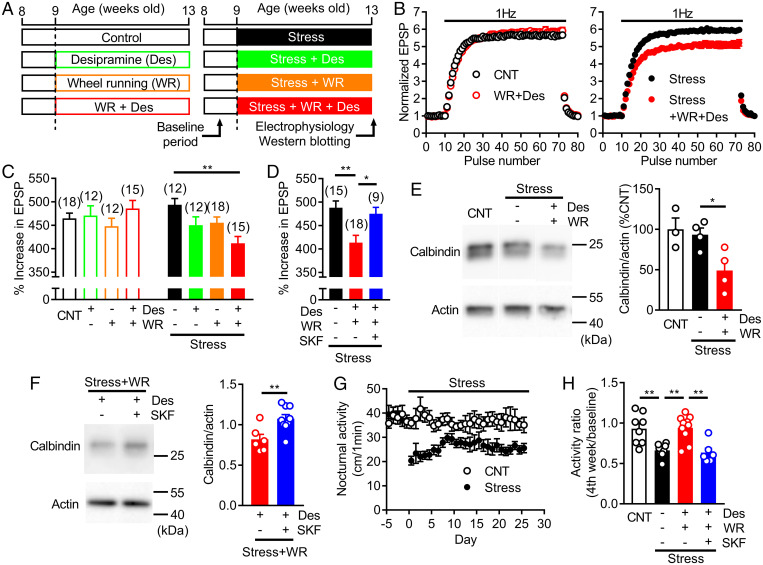Fig. 6.
Experience-dependent augmentation of noradrenaline–D1 receptor signaling facilitates effects of noradrenergic antidepressant. (A) Timeline of restraint stress, WR, and desipramine (Des) treatment. (B) Effects of chronic Des (30 mg/kg/day for 4 wk) and WR on 1-Hz frequency facilitation at MF synapse in nonstressed (left) and stressed (right) mice. (C) Summary of effects of Des and WR on frequency facilitation in nonstressed and stressed mice. Two-way ANOVA (stress effect, F1,106 = 1.757, P = 0.1879; treatment effect, F3,106 = 1.657, P = 0.1809; interaction, F3,106 = 4.424, P = 0.0057) followed by Dunnett's test (**P = 0.0011). (D) Effects of SKF (1 mg/kg/day) on reduction of frequency facilitation caused by Des and WR in stressed mice. One-way ANOVA (F2,39 = 7.508, P = 0.0017) followed by Dunnett's test (*P = 0.0247, **P = 0.0015). (E) Effects of Des and WR on calbindin expression in DG. Typical immunoblots (left) and quantified data (right). One-way ANOVA (F2,8 = 5.809, P = 0.0276) followed by Dunnett's test (*P = 0.0399). (F) Effects of SKF on calbindin expression in DG of Des-treated mice (t13 = 3.164, **P = 0.0075). (G) Effects of chronic stress on nocturnal home cage activity. (H) D1-receptor–dependent reversal of stress-induced decrease in home cage activity by Des and WR. One-way ANOVA (F3,28 = 9.789, P = 0.0001) followed by Bonferroni's test (**P < 0.01). The number of data is shown in the graph in C and D.

